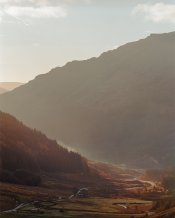Alan_Silvester
Member
Hi all,
I've been trudging through a set of negs scanning them on my Nikon CS9000. It's my first real batch with this process and I'm wondering about the noise/grain I appear to be getting, where it's coming from and how I can improve the quality of my final image. I've attached a low res image as an example...
I appear to be getting a lot of noise/grain in the mid tones of my images. The shot I've uploaded is a good example as it has a good dynamic range. It's the areas in the middle that appear to show the grain a lot more than the highlight or shadow. I'm shooting Portra 400 at box speed. I'm wondering about the following:
Cheers,
Alan
I've been trudging through a set of negs scanning them on my Nikon CS9000. It's my first real batch with this process and I'm wondering about the noise/grain I appear to be getting, where it's coming from and how I can improve the quality of my final image. I've attached a low res image as an example...
I appear to be getting a lot of noise/grain in the mid tones of my images. The shot I've uploaded is a good example as it has a good dynamic range. It's the areas in the middle that appear to show the grain a lot more than the highlight or shadow. I'm shooting Portra 400 at box speed. I'm wondering about the following:
- What produces the increased grain pattern? I know the ISO number gives the level of grain that'll be visible but is it my exposure / metering that's off or is it that I should have used a lower ISO film?
- Is it my scanner or scanning process that's bringing in a lot more digital noise? I appear to be able to remove the colour noise in PS quite easily but the grain in the middle of the image appears to be harder to bring down and I think it can look bad.
- Is this just part of the process of shooting film and I need to get used to having grain in my shots?
Cheers,
Alan




